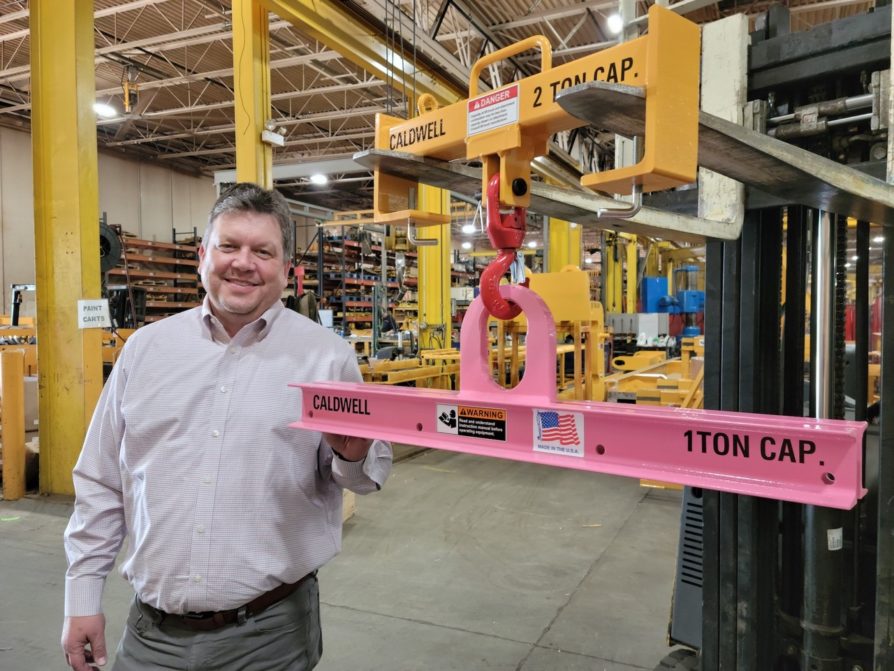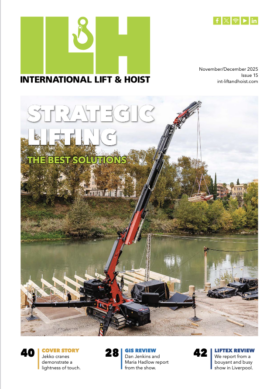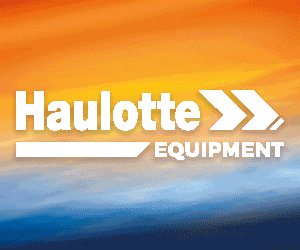)
Pride comes before a fall
‘Collaboration’ is in front of ‘compete’ in the dictionary — and so it can be in business too, says Doug Stitt, president and CEO at The Caldwell Group Inc.
Collaboration should never be overlooked as a component of business strategy, regardless of the size, strength, power, wealth, or reputation of the brand or product. Limited resources and time being increasingly short, mean we can nearly always accomplish more in tandem. I’ll prove it.
Truth is, my company, like innumerable others, would be smaller, in size and scope, and lack business intelligence, if it weren’t for the many collaborations and partnerships that have become such a central part of our 70-year story. Perhaps we wouldn’t even have made it this far on our own.
This doesn’t mean that we would be where we are through cooperations alone. We are ferociously competitive when we need to be and, to quote the dictionary definition (see box), in countless incidents, we have proven to be ‘more successful than someone or something else’. But it is important to consider the value of achieving enhanced success as part of a united endeavour. Indeed, collaboration can empower us to compete.
Further, partnerships can accelerate learning; this knowledge can be used in future relationships or in those moments where one has to plough a lonely furrow. We have learnt so much from taking opportunities to work with others and, if only a handful of readers are converted to this way of thinking, this article would have been worth writing.
Mutual understanding
Why is there a need to point out the benefits of something that has become so obvious to many others?
For starters, companies can easily become inbred, and a mentality procreates that the business knows what the marketplace wants versus vice versa. That means that the shutters automatically come down at the threshold of collaboration, because efforts to partner inevitably allow the infiltration of outside ideas. While, in reality, these external notions can strengthen a business, insular entities perceive them to be a threat or contaminant.
True, partnerships are often viewed as a sign of weakness, but I believe that is a simplistic view. Indicating that your firm may be better off partnering with another is, indeed, frequently frowned upon, but other times it is a matter of being afraid or unwilling to share information and knowledge. Obviously, as in any partnership, an unwillingness to trust creates limitations. These limitations may have caused earlier collaboration efforts to fail, but it is really the lack of communication and transparency that may have doomed initial explorations of avenues of mutual opportunity.
The value of a partnership is in understanding it. There remains a place in business for short-term, transactional relationships – just as there does contractually binding, long-term joint ventures – but they need to be managed appropriately. For example, participating in a relationship that is truly transactional must be understood by all parties as suitably inconsequential. First, something that is simply transactional is not really a relationship by nature. Second, those types of things need to be given less importance than a relationship that is based on deeper foundations and, thusly, more growth.
Like many businesses in our sector, we have channel partners that represent us in regions and marketplaces. Transactions between us take place, but these relationships are not transactional. Our distributors are strategic partners in that they are not just responsible for simple, short-term undertakings, but they provide insight and feedback into who our users are, and what they truly want and need. These relationships and collaborations help drive engineering, sales, marketing, new products, and much more.
Focus on partnerships
When suggesting anyone should open a door, or lower a guard, it is important to do as one says. Luckily, I have numerous specific examples of how forging partnerships has led to success.
As readers know, we have a longstanding agreement with RUD to bring lifting points and other products to the US and Canada. This is an ongoing circumstance, but other partnerships are more notable as case studies. Recently, we were one of several Rockford, Illinois businesses, delivering various scopes of work to The Giant Magellan Telescope, an international consortium of leading research institutions. Ingersoll Machine Tools Inc, Circle Boring & Machine Company and Safeway Products Inc all joined forces to deliver a solution that none of us could have fulfilled without each other.
Initially, Caldwell manufactured a lifter / rotator based on a 110t capacity Dura-Mod Modular Spreader Beam and two 20t capacity RUD ACP-Turnado swivel hoist rings. Below the beam, rotation and landing assemblies on each side of the load facilitated positioning and securement of Ingersoll’s track section. Two 85t capacity top shackles and two 55t capacity bottom shackles, also supplied by Caldwell, and lifting slings, were among other key components. Circle Boring was subcontracted for machining the swivel and landing assemblies after heavy structural welding at Caldwell. Powder coating was then provided by Safeway Products before final assembly with high torque specs on the hoist rings. Quality control inspections preceded packaging for shipping and loading onto an Ingersoll truck.
Like any good relationship, we all put in to get out. We were jointly focussed on the same end goal.
Trade association
I’ve preached before about the value of working with trade associations. Again, some firms are reluctant to enter into such memberships because they value competition over collaboration. In other words, they worry that knowledge will be harnessed and used against them. This is a prideful approach. Look at the Illinois Manufacturers’ Association (IMA) as an example. Yes, we give them a lot, but in return we are afforded tremendous support for worker training and development. We have also received a number of grants that have helped us to hire and develop good workers. What’s to fear?
That’s without referencing the Associated Wire Rope Fabricators (AWRF), which has been an important association for years in the lifting industry. Along with organisations like the Lifting Equipment Engineers Association (LEEA), and the American Society of Mechanical Engineers (ASME), they have helped to create standards in multiple areas of the landscape.
Without this work, the design, fabrication, and use of many lifting products would not enjoy the consistent guidelines they do today. We have collaboration to thank for it, as the technical committees affiliated with these groups demonstrate. It is these resources and their contributors’ commitment that help drive future change and development.
Memberships, like partnerships, must be assessed and valued. Companies, like Caldwell, are very committed to a variety of organisations but it does come down to a simple business equation: is there a return on the investment? Businesses can’t survive without that. Part of that value or return comes from the participation of other companies, particularly those that are current or future customers. If those companies cease to participate, the justification to commit the monetary and human resources becomes questionable.
Remember, many businesses would be smaller, in size and scope, and lack the intelligence they rely on every day, if it weren’t for the ability to collaborate and compete in equal measure.











